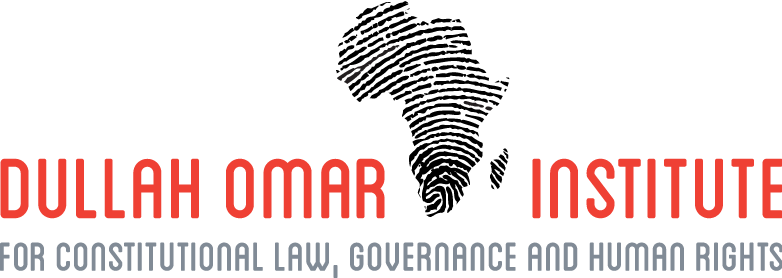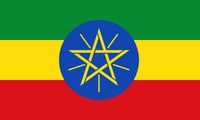Determining the size of local councils in Ethiopia: The larger, the more democratic?
The country has been experiencing political turmoil and conflicts since 2015, including a civil war in its northern part that began three years ago. The poor security condition was not, however, the only, even the primary, reason for the indefinite postponement of local elections. After all, the sixth general election - election to the national parliament and state councils - was held on 21 June 2021 despite the unfavourable political and security situation prevailing in the country. Local government is not taken seriously and is seldom seen, both by the ruling party and opposition parties, as a level of government with an important political pertinence but as the central government’s agent of enforcement and control. None of the political actors raised eyebrows when the local elections were indefinitely postponed.
The National Electoral Board of Ethiopia (NEBE), the election management organ of the country, is planning to administer local elections soon, ten years after the preceding local elections, despite the political and security situation not being any better, if not worse, than the case ten years ago. The NEBE seems to be encouraged by the relatively successful completion of the sixth general elections. However, administering local elections, if the elections are to be properly conducted, is likely to cause major administrative and logistical challenges to the NEBE, mainly because of the sheer size of local councils. There are over 3.6 million seats in all local councils in Ethiopia as compared to the 550 seats in the House of Peoples Representatives (HPR), the lower house of the national parliament. These include the seats in different tiers of local government with elected councils, including special zones, special woredas, woredas (the equivalent of municipalities in South Africa), cities, and kebeles (the equivalent of wards in South Africa). Each local council has now up to 400 seats. Some state laws provide that a local councillor should represent as small a constituency as 5 people in a local council. As can be seen in Table 1 below, Ethiopia has the largest number of councillors in the world; even more councillors than China, the world’s most populous country. It has also by far the lowest councillor per citizens ratio; every councillor represents just 31 citizens.
Table 1: Total number of local councillors and citizens per a councillor
| Country | Total number of local councillors | Citizens per councillor |
| Republic of Ireland (2014 | 949 | 4861 |
| New Zealand (2000) | 1892 | 2039 |
| Philippines (2000) | 2102 | 37075 |
| Malaysia (2000) | 2921 | 7654 |
| Nepal (2000) | 3344 | 7099 |
| Australia (2000) | 6637 | 2886 |
| South Africa (2011) | 1990 | 5671 |
| Canada (2014) | 19534 | 1819 |
| Japan (2000) | 62452 | 2031 |
| China (2000) | 653244 | 1933 |
| Ethiopia (2022) | 3,600,000 | 31 |
Source: Fiscal and Financial Commission (2016) [stats on Ethiopia were added to the table by the author]
Why so many local council seats?
Local councils were not this large in the past. They had a maximum of 100 seats and as small as 15 seats, with the total number of local council seats being about 60, 000. The decision to increase the number of local council members was made in 2008, centrally by the then-ruling party the Ethiopian Peoples' Revolutionary Democratic Front (EPRDF). Subsequently, each state adopted a law to implement the decision. The official reason for expanding the size of local councils was to enhance the democratic participation of the public in decision-making at the local level. This begs the question, does enhancing democratic participation necessarily entail exponentially expanding the size of local councils? Has the increase in council seats made local government more inclusive and participatory?
The bigger, the better? Lessons from other countries
Among the primary case for the existence of local government is to enhance democratic inclusion by creating multiple deliberative councils. It thus seems logical to assume that the larger a local deliberative council is, the more representative and inclusive it would be. International practice, however, shows that inclusive democratic participation does not necessarily entail a large local council. Many countries with vibrant local democracies do not have large local councils. For instance, the United States of America is known for its local democracy. Alexis de Tocqueville, who likened local democracy to a “primary school” of democratic governance, has written extensively about how America’s democracy was rooted in its local democracy. However, America’s county and city councils do not have what can be considered large councils. The seats in the county and city councils range from 5 to 51 with the national average being six council seats. Metropolitan cities such as New York and Chicago, which have 8 million and 2 million population, respectively, have city councils composed of only 51 and 50 councillors, respectively. San Diego and Los Angeles, which have a population of 1.5 million and 3.9 million, respectively, each have a city council with just 15 seats. In South Africa, section 20 of the Local Government: Municipal Structures Act allows a local municipality to have as small as three seats and not over 90 seats. A district municipality can have a maximum of 20 seats. Even a metropolitan municipality, which has millions of residents and outstanding economic activities, can have a maximum of 270 seats. Thus, Cape Town and Johannesburg, two metropolitan cities, have municipal councils with 231 and 270 seats, respectively. Yet municipal councils in South Africa, including those with relatively small sizes, are relatively inclusive, with many municipalities governed by political parties other than the African National Congress (ANC) which is the ruling party at the national level. In Germany, the city of Munich, which has a population of 1.5 million, has only 80 councillors drawn from different political parties.
The effect of the expansion of local councils in Ethiopia
As shown above, international practice suggests a large local council does not necessarily mean inclusive and representative local government. Besides, the expansion of local councils in Ethiopia has not resulted in any meaningful inclusion of diverse voices at the local level. Until 2018 the EPRDF or parties that were affiliated with it, controlled almost every seat in every local council. The expansion of the size of local councils had the effect of, if that was not the intended purpose, making local elections uncompetitive and unrepresentative. Opposition parties often boycotted local elections since they could not field so many candidates to compete. The EPRDF itself could not fill all the seats in local councils. Thus, Birtukan Mideksa, the Chair of the NEBE, in a conference organised to discuss the next local election, attended by the author, said there were instances where almost all members of a family, including the husband, wife, and children, became members of a local council.
Partly due to their size, local councils have been an amorphous body lacking effectiveness in terms of passing quality decisions and exercising oversight on the local executive organ. Local councils (especially woreda councils) hold their meetings twice or three times a year, for a few days each time, simply rubber-stamp the reports of the various sectoral offices without much scrutiny, and often disband asking no serious questions. Woreda councils often hold their meetings in hotels. Members of the council are paid per diem for several days, and sometimes, their accommodation and food expenses are covered by the local government, which obviously eats into the already meagre financial resource of the latter.
Conclusion
As mentioned, the NEBE is planning to administer local elections soon, however, the exact date has not yet been disclosed. As it stands, the size of local councils in Ethiopia is unsustainable both from the point of view of managing local elections and creating an effective local council that passes quality decisions and effectively exercises oversight on the executive branch of the local government. If the intention is indeed to involve the public in local decision-making process, other platforms could be established where citizens can directly voice their concerns to local officials. It is thus suggested that the rationalisation of local councils should precede the election. The states should amend the relevant laws to reduce the local councils to a manageable size before the next local elections.
By Zemelak Ayele: Associate Professor, Centre for Federal Studies, Addis Ababa University. Extraordinary Associate Professor, Dullah Omar Institute. Email zemelak.ayitenew@aau.edu.et.
The author expresses his gratitude to the Ludwig-Maximilians-Universität München (LMU) for hosting him during his research stay in Munich and to the European Union's Horizon 2020 Research and Innovation Programme for supporting the research stay, as part of the LoGov project.


